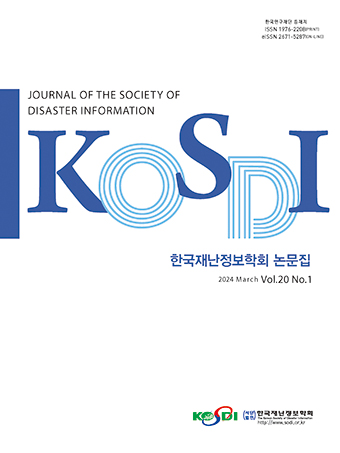Research Article
Abstract
References
Information
Purpose: Greenhouse gases are one of the major causes of global warming, a global disaster. This study aims to calculate road sector greenhouse gas emissions more precisely than conventional methods. Method: Currently, the average speed of a vehicle is used to calculate greenhouse gas emissions. In this study, GHG emissions are calculated using the speed of individual vehicles and compared with current methods. Result: It was confirmed that the existing emission estimation method underestimated about 15% in the case of carbon dioxide, about 1% in the case of nitrous oxide, and about 1% in the case of methane. Conclusion: Current methods of estimating greenhouse gas emissions were developed before 2000 and were developed to meet the limits of available data. However, with the advancement of technology, the quality of available data is now high, and new emissions estimation methods are needed. Therefore, in this study, we propose a method for estimating the velocity-based greenhouse gas emissions of individual vehicles as a more accurate method for calculating greenhouse gas emissions.
연구목적: 온실가스는 전 세계적인 재난인 지구 온난화의 주요 원인 중 하나이다.본 연구에서는 도로부문 온실가스 배출량 산정을 기존의 방법보다 정밀하게 산정하는 목적을 가진다. 연구방법: 기존에는 온실가스 배출량 산정에는 전체 차량의 평균속도를 이용한다. 본 연구에서는 개별차량의 속도를 이용해 온실가스 배출량 산정을 진행하여 기존의 방법과 비교분석을 진행한다. 연구결과: 기존의 배출량 산정 방법이 이산화탄소의 경우 약15%가 과소측정 되었음이 확인되었으며 아산화질소의 경우에 약 1%가 과대측정이 되었고 메탄의 경우 약 1%가 과소 측정 되었음이 확인되었다. 결론: 기존의 온실가스 배출량 산정 방법은 2000년 이전에 개발되어 가용자료의 한계에 맞추어 개발되었다. 하지만 기술의 발전으로 가용 자료의 질이 높아진 현재는 새로운 배출량 산정 방법이 필요하다. 따라서 본 연구에서는 진보된 자료에 맞는 좀 더 정밀한 온실가스 배출량 산정을 진행 할 수 있는 방법인 개별차량의 속도기반 온실가스 배출량 산정 방법을 제시한다.
- Kan, Z., Tang, L., Kwan, M.-P., Zhang, X. (2018). "Estimating Vehicle Fuel Consumption and Emissions Using GPS Big Data." Int. J. Environ. Res. Public Health 2018, Vol. 15, No. 4, p. 566.10.3390/ijerph15040566 29561813 PMC5923608
- Kim, W.-S. (2001). "A Study on the Role of Seoul City Govemment implementing the UN Framework Convention Climate Change." 2001-R-12 Seoul Development Institude.
- Ryu, J.-H, Lim, J.-H. (2008). "Establishment of Climate Change responding System for Transportation Sector." National Institute of Environmental Research, Nier No. 2008-27-977
- Song, C.-K., Kim, D.-K., Jin, H.-A., Shin, S.-A., Lee, H.-K., Lee, K.-M., Kim, B.-E., Seol, S.-H. (2013). "CAPSS Model National Air Pollutant Emission Estimation Manual." National Institute of Environmental Research, Nier-GP2013-097
- Rakha, H., Aerde, M.-V., Ahn, K., Trani, A.-A. (2000). "Requirements for evaluating traffic signal control impacts on energyand emissions based on instantaneous speed and acceleration measurements." Transportation Research Record, No. 1738, pp. 56-67.10.3141/1738-07
- Publisher :The Korean Society of Disaster Information
- Publisher(Ko) :한국재난정보학회
- Journal Title :Journal of the Society of Disaster Information
- Journal Title(Ko) :한국재난정보학회논문집
- Volume : 15
- No :4
- Pages :560-569
- DOI :https://doi.org/10.15683/kosdi.2019.12.31.560




 Journal of the Society of Disaster Information
Journal of the Society of Disaster Information







